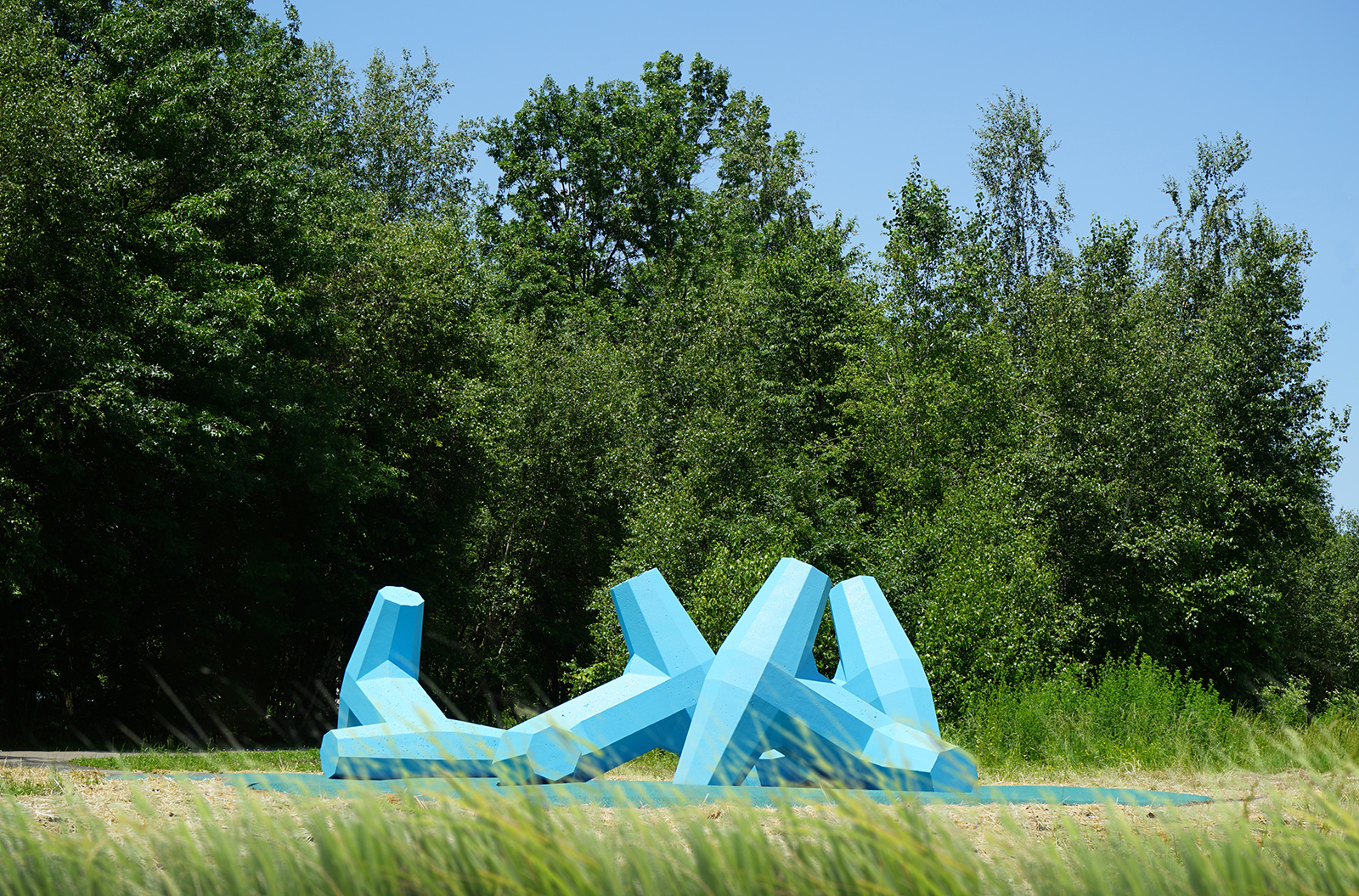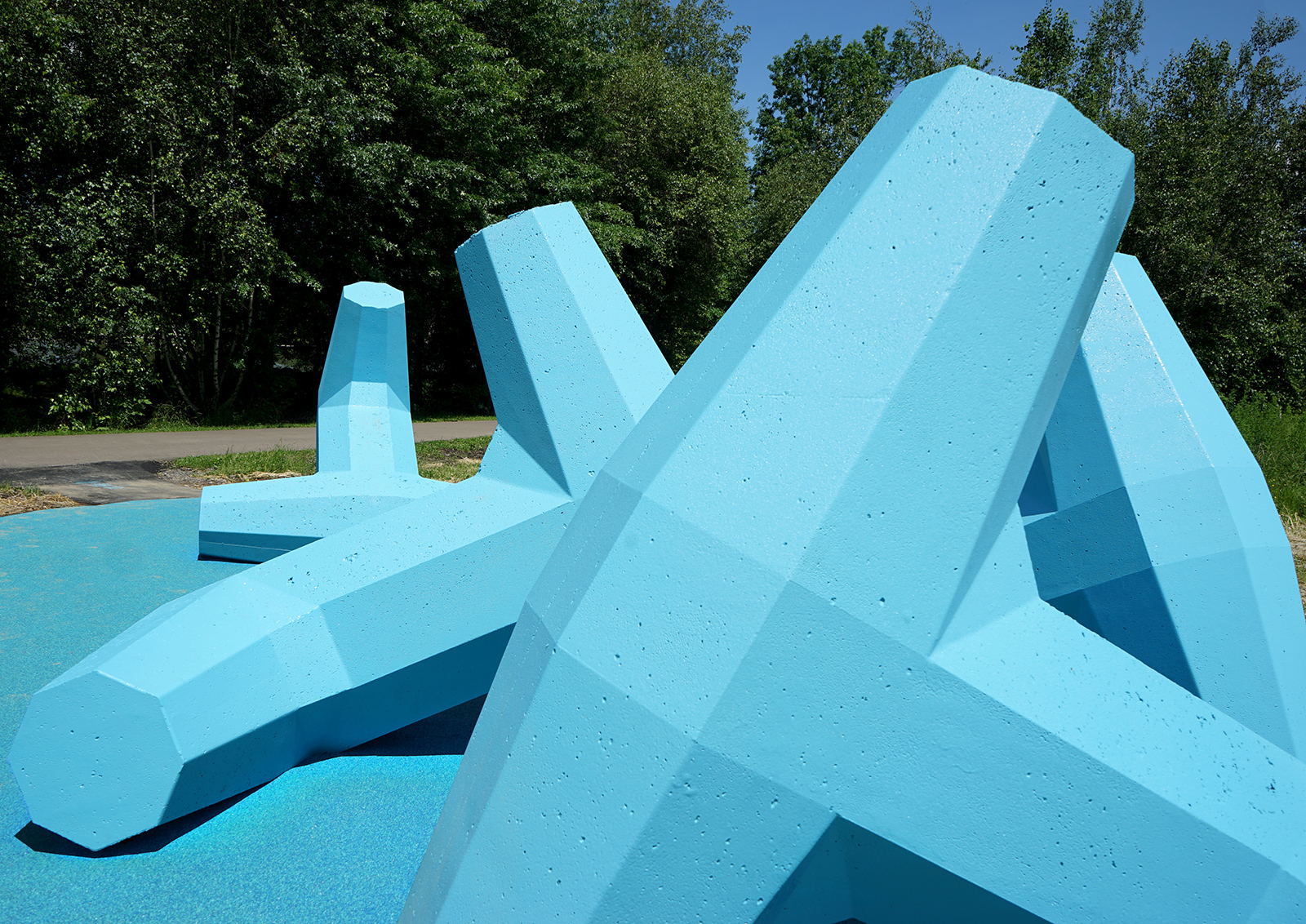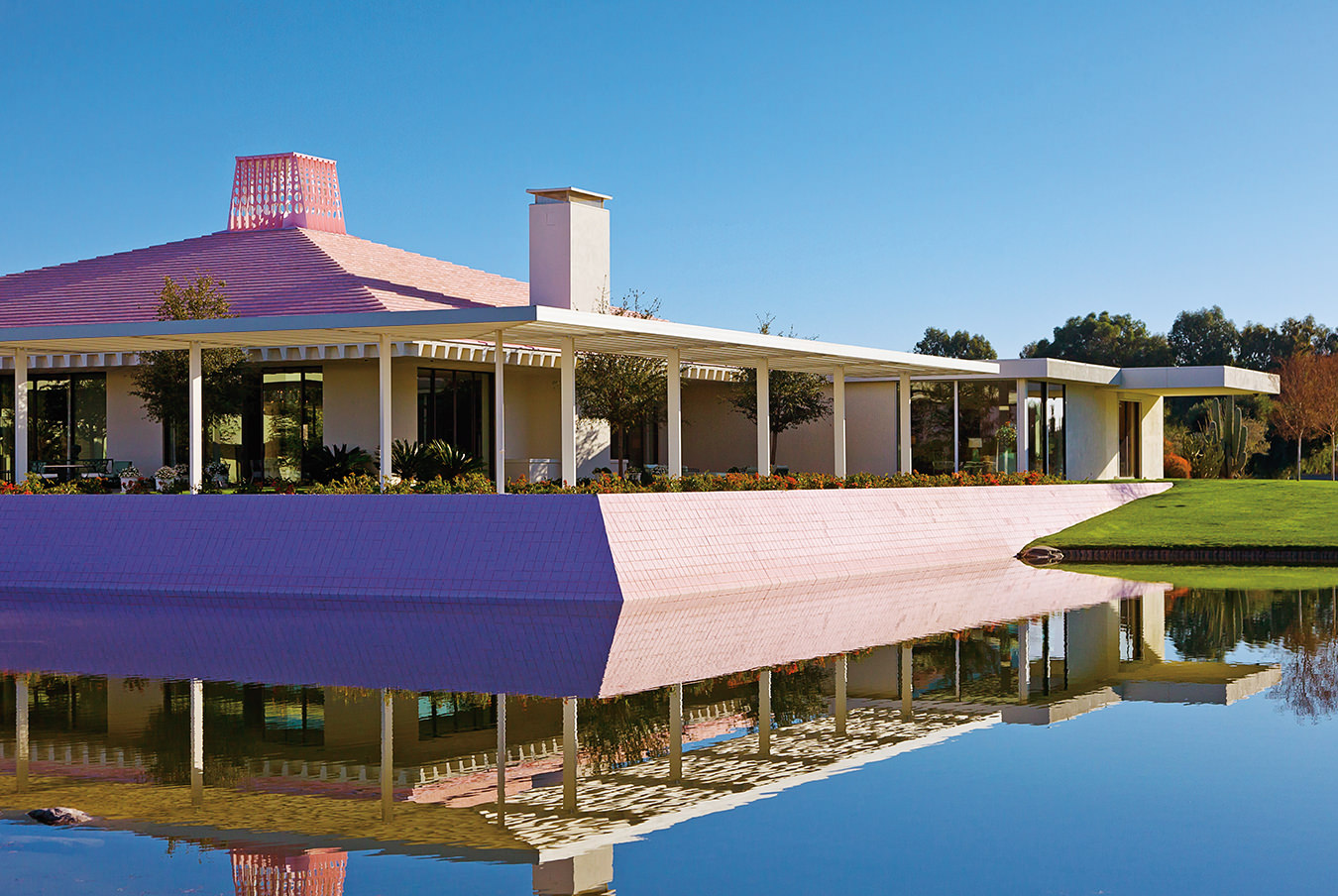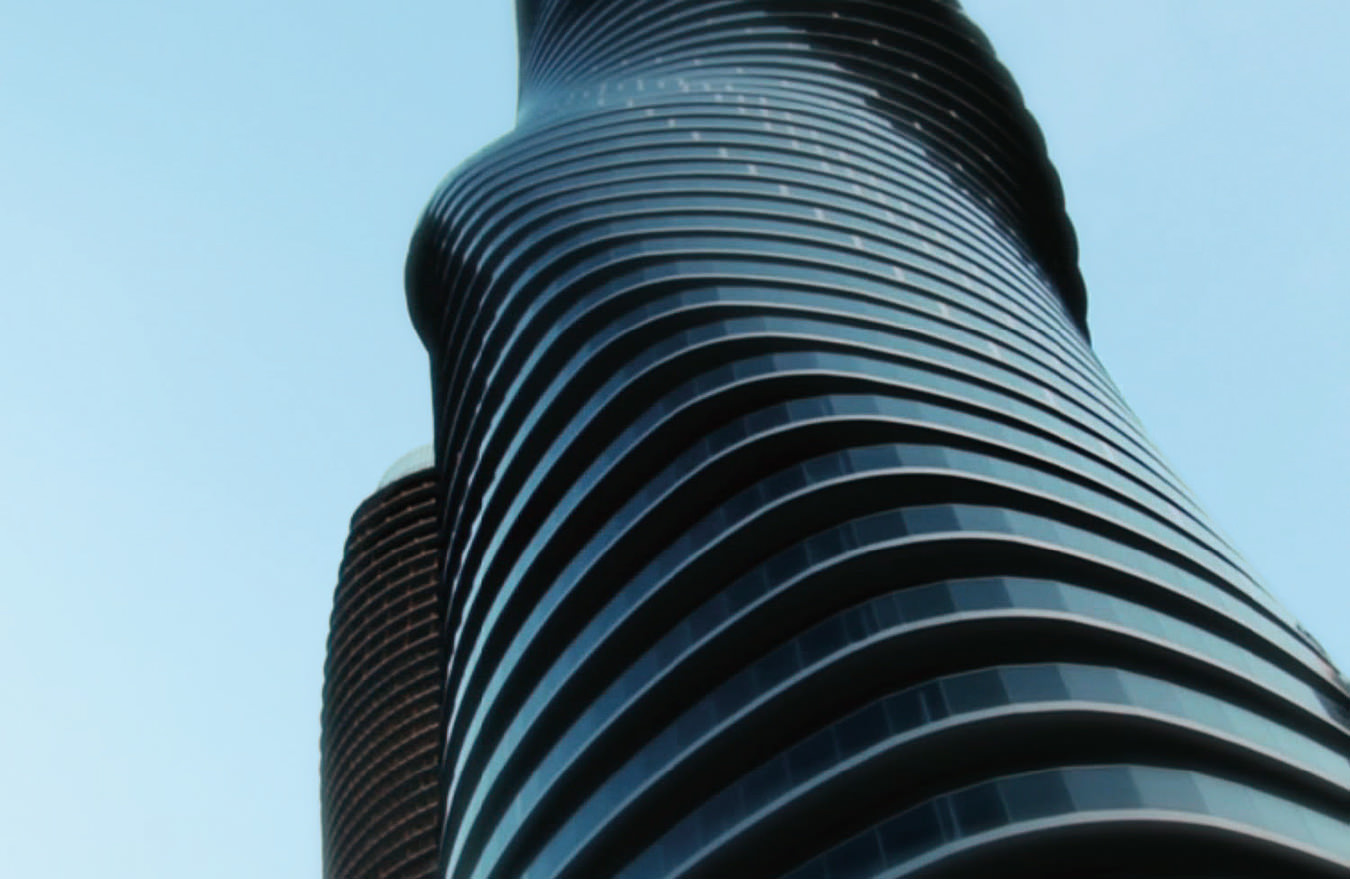Breakwater Installation: Social Infrastructure Made From Repurposed Physical Infrastructure
Playsculpture.

Canadian duo Julia Jamrozik and Coryn Kempster have salvaged four massive concrete breakwaters from Lake Erie and relocated them to Jamestown, New York, creating a monumental play structure for the small town.
Play is a central part of Jamrozik and Kempster’s work, and this latest project continues to build on this theme. In the past, they’ve built play structures for the annual landscape competition of Reford Gardens in Quebec, and for the Seoul Biennale of Architecture and Urbanism.
In addition to their established architectural practice, the duo has a penchant for colourful structures that can be climbed, with a focus on children’s interaction.
Their latest project combines recycled material with a play-focused approach by repurposing four dolosse from Lake Erie and integrating them into a playground. They describe the work as a “playsculpture”—halfway between art and playground equipment.
The dolos is a concrete form that is typically dropped into a body of water. Its angular, cufflink shape is meant to interlock with its neighbours, creating a massive underwater structure.
Together, these pieces of concrete act as breakwaters, meant to disrupt wave patterns hitting the shore. Dolosse have widespread commercial applications and are used in ports around the world to clear paths for shipping vessels.
“Our project salvages four of these seven-ton elements, which were originally fabricated for an Army Corps of Engineers project on Lake Erie and places them in the context of the city,” they explain. “This allows the infrastructural scale and utilitarian nature to be decontextualized, and for the sculptural shape of the dolos to be appropriated for human-scaled uses.”

The dolosse are situated on a matching base made of rubber pellets, giving them the appearance of sinking into the ground.
The team not only relocated the dolosse to a playground, but also painted them a vivid blue that stands out from the area’s green surroundings. The dolosse are situated on a matching base made of rubber pellets, giving them the appearance of sinking into the ground.
This placement also acts as a reminder of their original, intended underwater use. The unusual combination of industrial elements in a play setting is meant to surprise people and spark a sense of discovery. “Users and passersby can interpret the installation in their own way,” the team says.
Unlike conventional playgrounds, where structures like see-saws, slides, or swing sets have only one function, Breakwater is meant to be open-ended.
“The forms of the dolosse are unfamiliar and can be appropriated and used according to the will of the occupants, including sitting, climbing, sliding, lounging and playing hide-and-seek, among other activities,” Jamrozik and Kempster explain.
The structure is easily accessible, as it’s located right by the city’s popular Riverwalk.
Breakwater was funded by a two-stage architecture competition called the KaBOOM! Play Everywhere Challenge; the Ralph C. Wilson Jr. Foundation’s Built to Play initiative; the City of Jamestown; and the city’s Parks, Recreation and Conservation Department.
The KaBOOM! Play Everywhere Challenge also supported other projects, including the conversion of a sidewalk in Detroit into a running track, and a set of gigantic lawn chairs in Redwood City, California.
________
Never miss a story. Sign up for NUVO’s weekly newsletter here.




